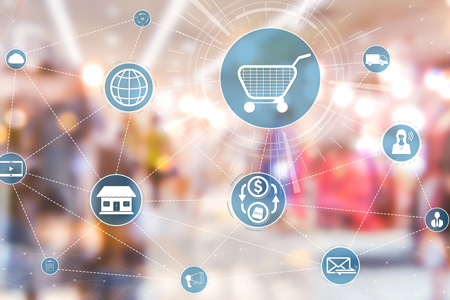Project Description

Omnichannel success means different things to different retailers and can have different implications by role within any given enterprise. As such, it pays to be specific and clear about your brand value proposition and how your omnichannel environment supports it.
Do you know precisely what services your customers expect or demand and what capabilities you need to support them? Do you sense or believe that new and extended omnichannel capabilities are needed based on what you are hearing from your customers or simply to be competitive with what other retailers are doing? Or are you continuing to be reactive instead of proactive to face ongoing global and local disruptions?
As we saw through the 2020 pandemic and its aftermath, omnichannel capabilities such as buy-online-pick-up-in-store (BOPIS) are very different for a grocery store versus an apparel retailer. Further, the requirements and complexities are different as well. Most of us expect a grocer to carry a typical or ‘standard’ grocery assortment, so BOPIS is truly about convenience for the customer. While focus must be on making the process convenient and easy, above all the grocer needs to concentrate on product freshness—and acute attention must be spent on things like product substitutions. In an apparel environment, most shoppers are trying to track down a particular item and/or a specific size and color. As such, inventory challenges for the retailer are significant in terms of accuracy and visibility across the fleet of stores, warehouses, and distribution centers (DCs).
Truly understanding and delivering on your omnichannel vision and strategy requires refining your objectives and prioritizing the steps needed to achieve your goals. In this point of view, we outline five steps to building your unique plan to achieve omnichannel success.
Step 1
Create Your Strategy and Business Plan
Define what ‘omnichannel’ is (and is not) and build the roadmap
As we mentioned earlier, the definition of what omnichannel success means and what is ‘in scope’ can differ widely from one retailer to another. Certain capabilities may be more important than others based on a specific business model or target consumer. For your definition, consider the following:
- Your typical customer journey drives your omnichannel capabilities. Recognize how this might differ across your customer demographic segments as well as how much consumer engagement and shopping are done on-line, via mobile, and/or in stores (note – the “and” is important).
- Omnichannel done well has significant inventory considerations. Understand your current inventory model and capabilities and what might need to change across vendors, DC’s, fulfillment centers, and stores.
- Omnichannel means planning differently. Plan holistically, yes, but also plan by channel. You need to include both forward and reverse supply chains (e.g. plan for returns and consider your partners).
- The state of your transactional data will drive how well some capabilities can be executed. Adjusting the frequency of store-level information updates (POS transactions, purchase orders, receipts, transfers) and the level of accuracy is critical now that customers and store associates expect to see correct information in real time. You will need to consider and rethink the level of housecleaning that is necessary and realistic—both with data and processes.
- Associate behavior will likely need to change with new capabilities. These changes are typically thought of in terms of store associates, but should also include buying, planning, supply chain, etc. Organization and staffing models, particularly for customer-facing roles, will probably need review and adjusting.
Build the roadmap based on your value proposition and priorities but consider the reality of your current state and the effort required to implement new capabilities. Also include consideration of merchandise and seasonal calendars as well as other critical initiatives impacting the organization; given the many tentacles of most omnichannel initiatives, it will likely require a high priority across the enterprise, and other projects may need to pause or be deferred.
Step 2
Define and Clarify Roles
Ensure accountability and cross-functional alignment across the enterprise
While some roles may not need significant changes, others may change dramatically during the migration to true omnichannel. Buyers and planners need to think about each commerce channel when they assort. Considerations include:
- What will interactions look like across the selling vehicles?
- How do inventory plans need to change?
- Do other organizations like supply chain need to be involved in those decisions?
Also, other tweaks in metrics and KPIs may require emphasis and clarity and, in some cases, new definitions. Where sales truly originate from may be ‘fuzzy’ and focus on holistic growth is critical. Customer service in the store must also be a focus point, but new services may make it seem like associates must now spend an inordinate amount time picking and packaging for BOPIS or ship-from-store orders. These additional responsibilities and the corresponding behaviors must be carefully designed to incorporate how in-store customers are handled during new omnichannel activities. Further, such behaviors need to be included in associate learning materials.
As your needs and processes are defined, ensure everyone understands their role. Communicate clearly and at multiple levels. To achieve omnichannel success, traditional mindsets will likely need to be challenged and bent. Silos must be broken down to ensure transparency and alignment and to facilitate required collaboration between functions that may not be used to the frequency of required communication and newly integrated processes.
Step 3
Design and Build
Define the business processes and capabilities—and then the systems (not the other way around)
Once again, we cannot emphasize enough: omnichannel success represents a set of business capabilities—it is not a system, nor is it an ‘IT project.’ Many omnichannel initiatives seem to initially focus on systems and technology. While these enablers are indeed important, we cannot stress enough not to let the tail wag the dog. The business needs and capability priorities should lead the way, with enabling technologies following suit. CIOs, you are welcome.
While your enterprise may eventually need a more complete omni platform over time, building too much too soon may either limit your flexibility down the road or drive changes that don’t support your business strategy and requirements. Further, hitting the gas too hard will likely necessitate some ‘undoing’ of business processes, systems, interfaces, and/or integrations down the road—all of which take resources away from higher priority projects.
After the capability needs and priorities are defined, at the appropriate level of detail and with a cross-functional view, it is now the time to dig into the technology needs and implications. Work across your business and IT teams to create options for supporting these capabilities, either with extensions to existing systems, additional integration, and/or by selecting new retail solutions. Again, with a roadmap, the proper priorities and sequencing should start to become apparent.
Step 4
Test and Practice
Test, train, pilot, test, refine, deploy
Any new processes and systems need testing, training, and deployment support. This is even more critical in the omnichannel world as so many other processes and systems are impacted. Further, little is done in the omnichannel world that isn’t customer-facing—as such, the stakes are quite high. Given this, it is typical for a new omnichannel capability to be piloted first. As an example, pilot a limited number of SKUs in a select number of stores. This approach allows the steps and transactions to be vetted and the processes refined prior to a full rollout.
In addition, given the potential impact to customers, externally-facing communications need to be a focus both for pilot and full deployment. Messaging such as what the new service involves, what’s different, how will it work, and others are all information your customers will appreciate. Plus, when done well, messaging can build brand loyalty and deepen engagement. Ensure the store and support teams are prepared for additional ‘feedback’ from customers as they start to utilize the new omnichannel shopping capabilities. Also, provide mechanisms to share this feedback throughout the organization.
Step 5
Learn and Keep Moving
Assess, refine, continue
Or as we like to say, “rinse and repeat.” New omnichannel capabilities may bring new shopping methods to customers, introduce new associate activities in the store, add complexity in the supply chain, insert new vendor steps, and more. It’s important to assess the activities, feedback, and benefits, and plan for any required refinements. Further, given that most omnichannel capabilities are part of a broader roadmap, the overall integration of new processes and related solutions is critical for the cohesive shopping presentation to the consumer and effective inventory fulfillment.
Once an initiative is completed, there should be a review or checkpoint of the full roadmap to determine any new information or required adjustments. This will be an iterative process, and your organization will learn along the way. Roadmaps may need to be adjusted to reflect modifications in priorities, new understanding of consumer behavior, or simply the ultimate realization of changes required and the organization’s gulp rate.
Final Word
Omnichannel is broad and far-reaching. Omnichannel is more than just ecommerce and selling online, and it requires much more than just fulfillment of online orders. True omnichannel success involves synchronized processes and capabilities throughout most of the retail enterprise, namely:
- More robust item definitions for extended assortments, including enhanced attributes and descriptions
- Multiple storage/fulfillment nodes to support efficient use of inventory
- New store-level capabilities and related associate processes
As with other significant areas of opportunity, sometimes the biggest challenge is just getting started. It’s important to note that as a retailer, you’re not expecting to move from ‘lagging’ to ‘leading’ overnight or in a few steps. But you likely recognize that achieving omnichannel success entails strategic improvements to remain relevant for your shoppers, and there’s no better time than now.
Contributors
The Parker Avery Group is a leading retail and consumer goods consulting firm that transforms organizations and optimizes operational execution through development of competitive strategies, business process design, deep analytics expertise, change management leadership, and implementation of solutions that enable key capabilities.






